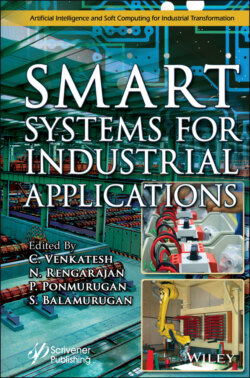Читать книгу Smart Systems for Industrial Applications - Группа авторов - Страница 35
1.5.4 Enabling Data Privacy and Security in the Field of Remote Healthcare Management
ОглавлениеInternet of Medical Things (IoM) has gained specialization in recent years with growing applications. Both embedded and wearable sensors gather comprehensive information about patients. It is shared with medical professionals for diagnosis. The sensitive nature of this data gives rise to protection and privacy, which is currently a significant challenge of the IoM. It uses anonymity-based authentication to mitigate privacy issues. To ensure the session is secure, upon mutual authentication, both medical professionals and medical sensors utilize private session keys. Research in this area of authenticity and privacy of data is still at the nascent stage. Currently, available authentication features are not suitable to achieve the privacy goals in terms of its features. At this juncture, there is not a credible and efficient authentication program in this segment. One of the key issues in achieving the goal is two-factor security in the event of loss or tampered smart card. Research is deplored to investigate the adversarial model, which is expected to mitigate various redundancies and ambiguities. This paper explores a methodology with 12 independent criteria analyzed using an adversary model for practical use. Broadly, it enables a better understanding of privacy requirements if not successful. In [28], the authors explore the feasibility of smart revocation/reissue and improve security efficiencies using a formal model. Secure-Anonymous Biometric-Based User Authentication Scheme (SAB-UAS) is tested for efficiency and meeting security goals.
In [29], the authors present SAB-UAS using a smart card with three entities in the healthcare communication chain, medical practitioners, wireless gateways, and wearable sensors. Moment SAB-UAS scheme starts process, two master keys are generated along with a long-term secret key by Wireless gateways, which is then transmitted to wearable sensors. Gateways quickly try to use one of the master keys, establishing it as a public key. This system is simulated at three stages, mainly user name registration, system login and authentication, and any case of revocations. After simulating SAB-UAS at three stages, the formal security analysis is also simulated. Random Oracle model is used to prove the security efficiency of SAB-UAS. The simulation clearly shows SAB-UAS scheme can securely protect sensitive information from various retrieval mechanisms. An informal security attack is also simulated with different 12 independent conditions, and it can meet the security goals setup. It is essential to understand whether SAB-UAS is also efficient because the electronic healthcare system comprises lightweight resources with very many limitations like storage capacity, bandwidth, and processing capabilities. Resource efficiency analysis is computed to understand storage, communication, and computation capabilities observed under the following conditions:
1 (i) Analysis of Packet Delivery Ratio (PDR): With a large number of sensors, efficiency in a PDR of SAB-UAS deteriorates.
2 (ii) Analysis of End-to-End (ETE) delay: There is a lesser delay compared to other methods. But with the increasing number of communication nodes, the delay in ETE is proportional.
3 (iii) Analysis of Throughput Transmission Rate (TTE): SABUAS has a better throughput rate compared to other authentication systems, and there are negligible deviations in TTE even when there were increased communication nodes.
4 (iv) Analysis of Routing Overhead (RTO): SAB-UAS seems to have tactful management of packet routing enhancing network performance and bandwidth usage.
The above simulations are essential in an environment of Remote Healthcare because the speed and efficiency of resources play a critical role in patient health. Response time should not be lost at the cost of security as well. SAB-UAS performs well compared to other authentication systems. Maybe with increasing communication nodes, it has lower efficiency in PDR and ETE. This proposed SAB-UAS scheme can substantially improve performance at the storage, computation, and communication level at the same time, keeping costs at lower. This, in turn, makes Remote Healthcare Management a real-time application. SAB-UAS has robust security when it comes to both formal and informal security threats and potential attacks. The essential of IoT and security of collected information are summarized in Table 1.5.
